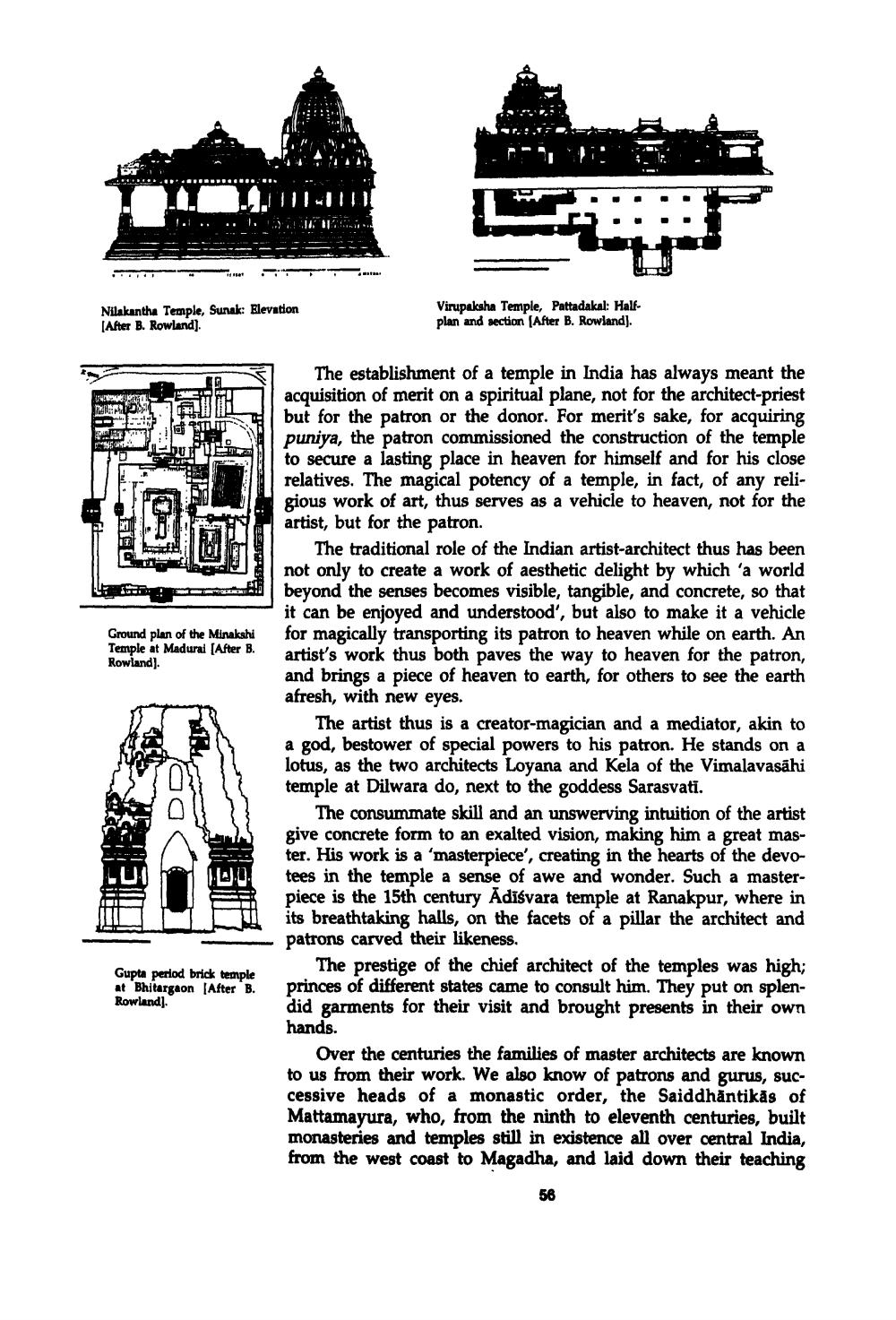________________
.. 1.
6.
Nilakantha Temple, Sunak: Elevation [After B. Rowland).
Virupaksha Temple, Pattadakal: Halfplan and section (After B. Rowland).
RUL
MERIT SA T
ETIT
OL
R
1
.
Ground plan of the Minakshi Temple at Madurai (After B. Rowland).
ma
The establishment of a temple in India has always meant the acquisition of merit on a spiritual plane, not for the architect-priest but for the patron or the donor. For merit's sake, for acquiring puniya, the patron commissioned the construction of the temple to secure a lasting place in heaven for himself and for his close relatives. The magical potency of a temple, in fact, of any religious work of art, thus serves as a vehicle to heaven, not for the artist, but for the patron.
The traditional role of the Indian artist-architect thus has been not only to create a work of aesthetic delight by which 'a world beyond the senses becomes visible, tangible, and concrete, so that it can be enjoyed and understood', but also to make it a vehicle for magically transporting its patron to heaven while on earth. An artist's work thus both paves the way to heaven for the patron, and brings a piece of heaven to earth, for others to see the earth afresh, with new eyes.
The artist thus is a creator-magician and a mediator, akin to a god, bestower of special powers to his patron. He stands on a lotus, as the two architects Loyana and Kela of the Vimalavasāhi temple at Dilwara do, next to the goddess Sarasvati.
The consummate skill and an unswerving intuition of the artist give concrete form to an exalted vision, making him a great master. His work is a 'masterpiece', creating in the hearts of the devotees in the temple a sense of awe and wonder. Such a masterpiece is the 15th century Adīśvara temple at Ranakpur, where in its breathtaking halls, on the facets of a pillar the architect and patrons carved their likeness.
The prestige of the chief architect of the temples was high; princes of different states came to consult him. They put on splendid garments for their visit and brought presents in their own hands.
Over the centuries the families of master architects are known to us from their work. We also know of patrons and gurus, successive heads of a monastic order, the Saiddhāntikās of Mattamayura, who, from the ninth to eleventh centuries, built monasteries and temples still in existence all over central India, from the west coast to Magadha, and laid down their teaching
Gupta period brick temple at Bhitargaon (After B. Rowland]




